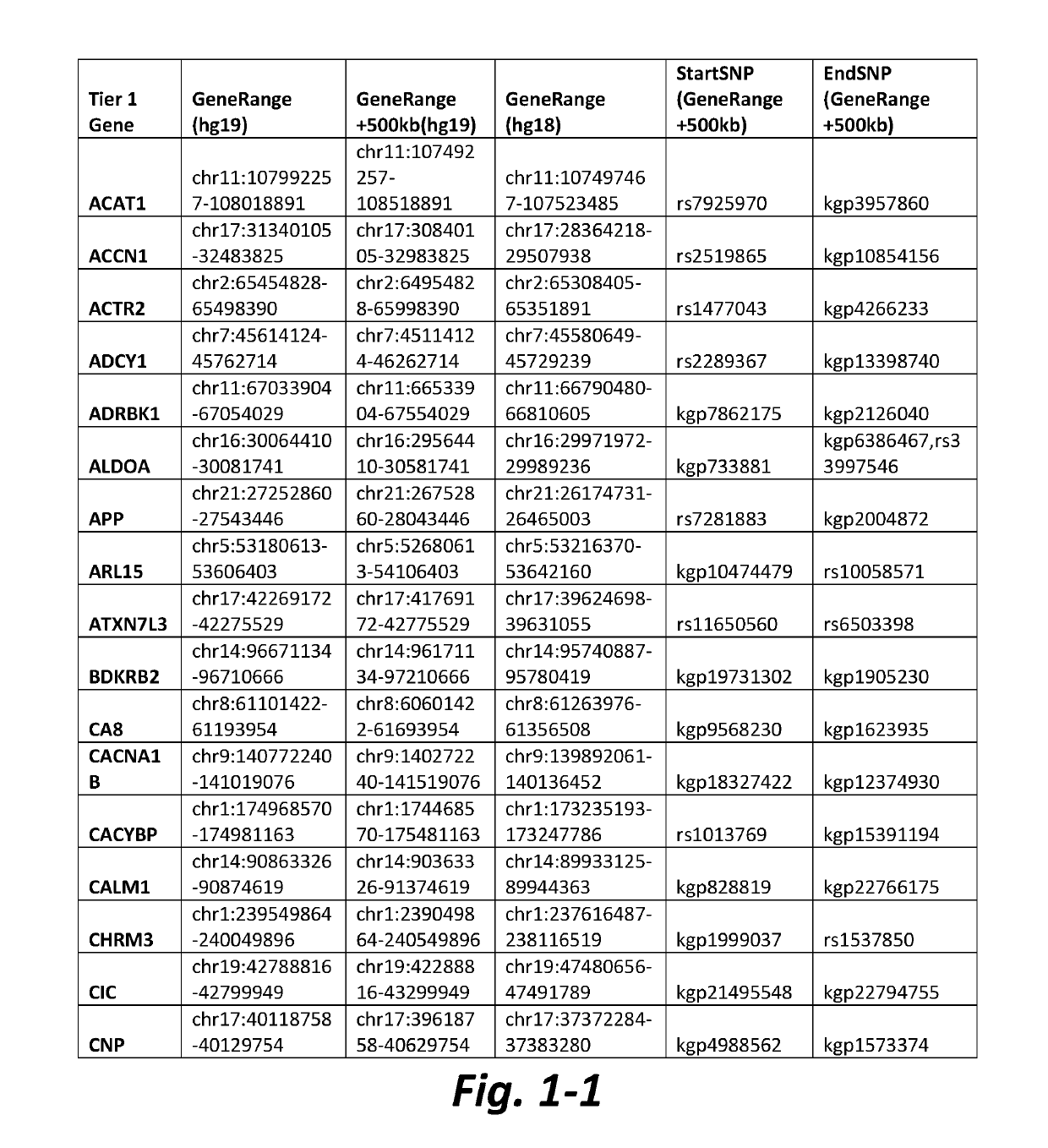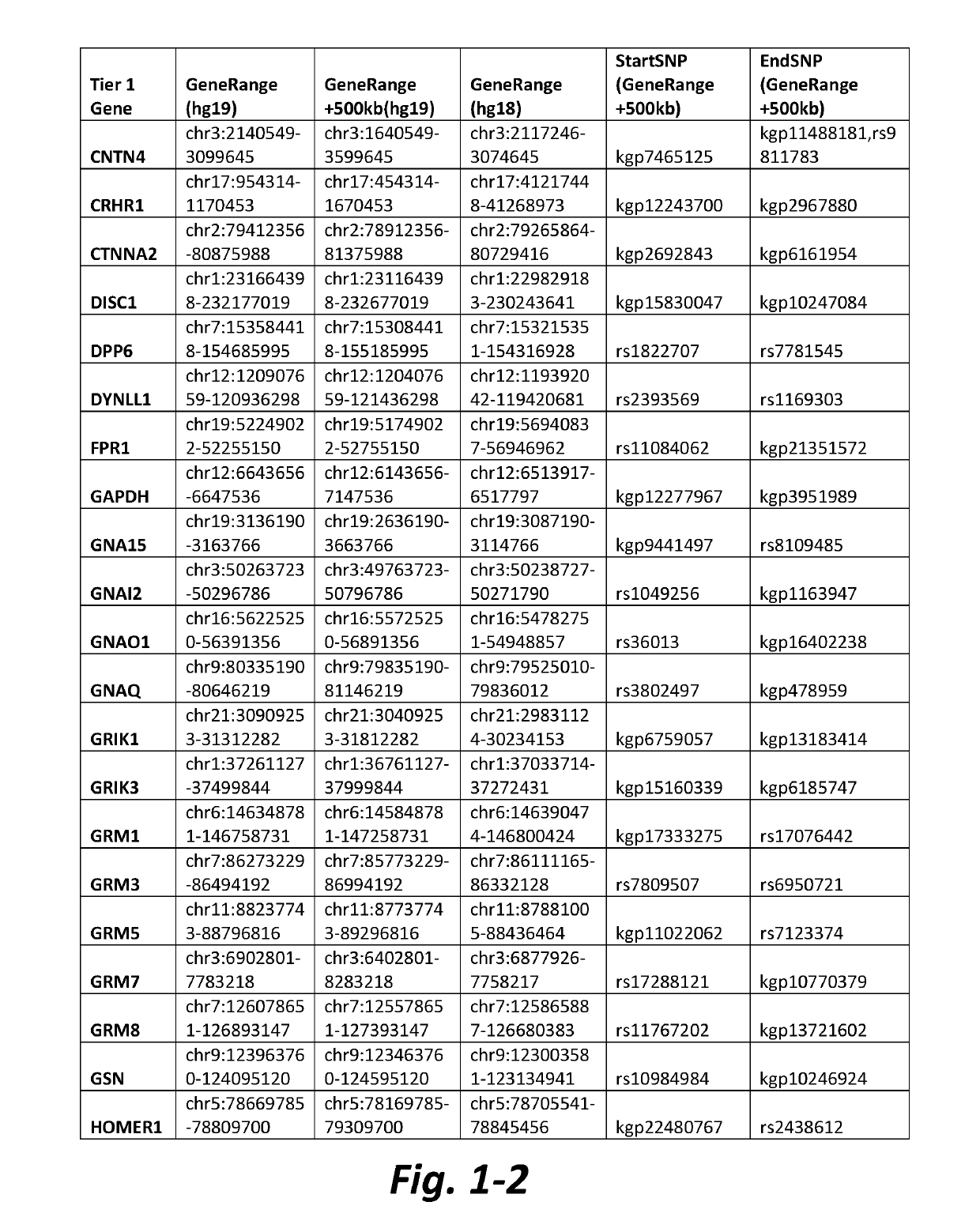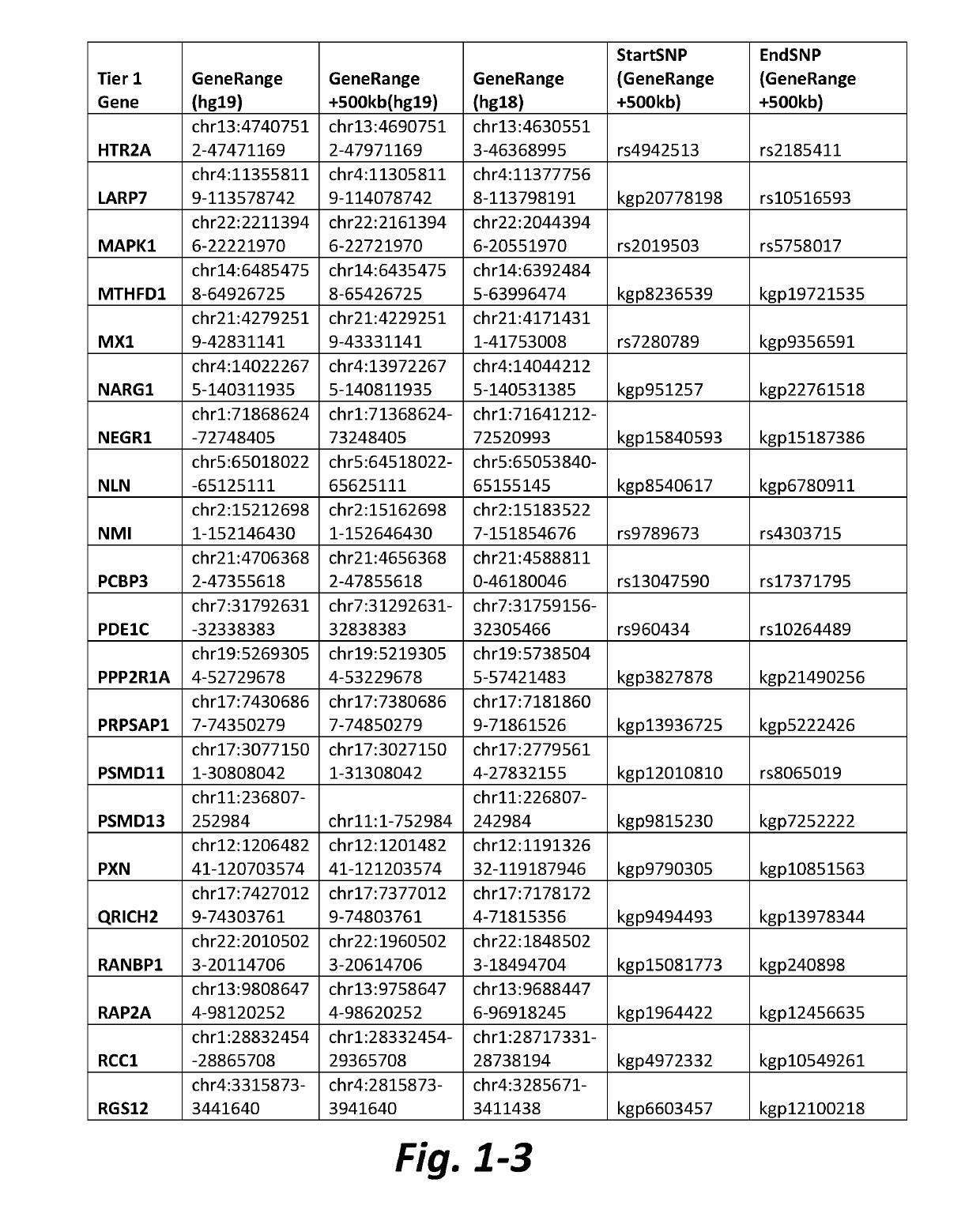Nonselective metabotropic glutamate receptor activators for treatment of anorexia nervosa and binge eating disorder
a non-selective, glutamate receptor technology, applied in the direction of drug composition, metabolic disorder, biochemistry apparatus and processes, etc., can solve the problems of extreme emaciation, huge individual cost, and large unknown genetic structure underlying the susceptibility
- Summary
- Abstract
- Description
- Claims
- Application Information
AI Technical Summary
Benefits of technology
Problems solved by technology
Method used
Image
Examples
example 1
of Genetic Alterations in the mGluR Network of Genes in Anorexia Nervosa and Binge Eating Disorder
[0129]We analyzed 1,040 children, ages 12 to 20, with anorexia nervosa (AN) (See Table 1 below), and found that a total of 388 children (37.3%) had mutations in mGluR genes. Of these 388 children, 102 children (9.8%) had mutations in Tier 1 and Tier 2 genes (a total of 279 genes), and 80 children (6.6%) had mutations in Tier 1 genes (total of 79 genes).
TABLE 1Total number of subjects among 1,040 children with AN who aremGluR mutation positive.Number of AN mGluRPercentage of ANmutation positivemGluR mutationGene setsubjectspositive subjects79 (Tier-1)696.6%279 (primary mGluR1029.8%network)868 (secondary mGluR38837.3%network)
[0130]Table 2 shows data of representative CNVs from subjects with AN wherein a Tier 1 mGluR network gene was located within, or in the vicinity of, a CNV in the patient's sample. CNVs can lead to structural changes that affect the transcription of genes located outsi...
example 2
of Anorexia Nervosa and Binge Eating Disorder with CNVs in mGluR Network Genes with Fasoracetam (Fasoracetam Monohydrate)
[0140]Previously, an open-label Phase Ib clinical trial was conducted to study the safety, pharmacokinetics, and efficacy of fasoracetam (fasoracetam monohydrate) in adolescent subjects between the ages of 12 and 17 previously diagnosed with ADHD. Each of the study subjects in this clinical trial had one or more CNV in an mGluR network gene. Fasoracetam monohydrate successfully treated these ADHD patients. None of the patients in the ADHD clinical study had a formal diagnosis of AN. However, appetite was observed to be improved in the children tested, suggesting that fasoracetam may have beneficial effects in AN.
[0141]As such, a clinical trial will be initiated to investigate the safety, pharmacokinetics and efficacy of fasoracetam in subjects between the ages of 12 and 21 previously diagnosed with AN who also have at least one genetic alteration in an mGluR netwo...
PUM
| Property | Measurement | Unit |
|---|---|---|
| disorder | aaaaa | aaaaa |
Abstract
Description
Claims
Application Information
 Login to View More
Login to View More - R&D
- Intellectual Property
- Life Sciences
- Materials
- Tech Scout
- Unparalleled Data Quality
- Higher Quality Content
- 60% Fewer Hallucinations
Browse by: Latest US Patents, China's latest patents, Technical Efficacy Thesaurus, Application Domain, Technology Topic, Popular Technical Reports.
© 2025 PatSnap. All rights reserved.Legal|Privacy policy|Modern Slavery Act Transparency Statement|Sitemap|About US| Contact US: help@patsnap.com



